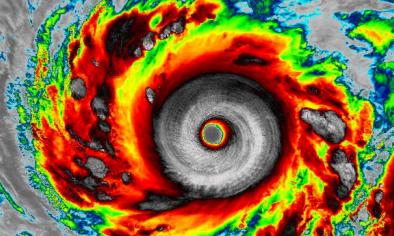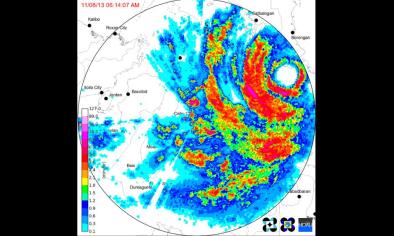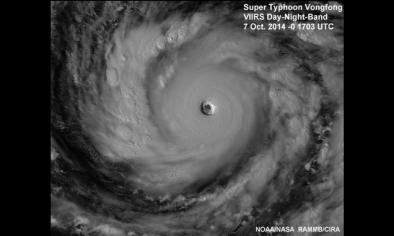Typhoon Phanfone Impacts Japan: Seven Dead including U.S. Airman, Four Missing

Typhoon Phanfone moved away from Tokyo, Japan, and out to sea Monday, but not before killing at least seven and leaving four missing, injuring at least 62 others, forcing the evacuations of thousands, sparking landslides and disrupting travel for thousands of others across the island nation. The seventh death was reportedly caused by a landslide at a Buddhist monastery in Yokohama, according to Asahi Shimbun.
Six U.S. servicemen at Kadena Air Base on Okinawa, Japan, were taking photos of 12 to 15 foot waves on the northwest coast of the island Sunday when three were overtaken by the waves, according to Nago District Police in Okinawa. At least one of the airmen died in the incident. Search efforts were ongoing Monday by air and sea for the two U.S. airmen who were still missing, a spokesperson from Kadena Air Base said.
...
In the city of Yokohama, in Kanagawa Prefecture, two men were killed when heavy rain triggered mudslides in the area, burying them, according to public broadcaster NHK. A 21-year-old surfer, who was a college student, was also reported missing just south of Tokyo off the coast of Kanagawa Prefecture as was a junior high school student swept away on a beach in Yokosuka.
French Formula One driver Jules Bianchi crashed and received a severe head injury during the rain-plague Japanese Grand Prix Sunday. In wet weather conditions, the 25-year-old crashed into a crane that was assisting another driver, The Associated Press reports. Other drivers complained of poor visibility as rain fell on the course and night began to set. Bianchi underwent emergency surgery for his head trauma, CNN reports.
Evacuation advisories were issued for more than 2 million people due to Phanfone, 50,000 of which were actually forced to evacuate. A large portion of the evacuations came in Shizuoka Prefecture, where the government ordered some 667,000 people to evacuate. A river in Toyohashi, Aichi Prefecture, threatened to burst its banks, forcing the evacuations of nearly 5,000 others. More than 9,000 homes across 7 prefectures also lost power during Phanfone.
Phanfone also made a big impact on travel across Japan.
Heavy rain suspended bullet train service between Tokyo and Osaka, affecting more than 100,000 people, and more than 600 flights were canceled at Tokyo's Haneda Airport. According to flightaware.com, there were also cancelations out of Narita, Kansai International Airport near Osaka in central Japan, and Fukuoka Airport in western Japan.
Related Content






